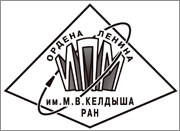|
|
Preprints of the Keldysh Institute of Applied Mathematics, 2010, 040, 17 pp.
(Mi ipmp225)
|
 |
|
 |
This article is cited in 1 scientific paper (total in 1 paper)
Point blow in atmosphere
R. K. Kazakova
Abstract:
The problem of point explosion in the atmosphere was first solved by D.E. Okhotsimsky with staff at the high-speed computer (BESM-1) with grid method proposed by Keldysh in 1953. Here is an overview of different methods for solving the problem of point explosion in a homogeneous atmosphere. There are indicated shortcomings of these methods, results of calculations in the form of plots and tables, and baseline data on which the problem has been solved.
Citation:
R. K. Kazakova, “Point blow in atmosphere”, Keldysh Institute preprints, 2010, 040, 17 pp.
Linking options:
https://www.mathnet.ru/eng/ipmp225 https://www.mathnet.ru/eng/ipmp/y2010/p40
|

| Statistics & downloads: |
| Abstract page: | 164 | | Full-text PDF : | 179 | | References: | 14 |
|




 Contact us:
Contact us: Terms of Use
Terms of Use
 Registration to the website
Registration to the website Logotypes
Logotypes








 Citation in format
Citation in format 
